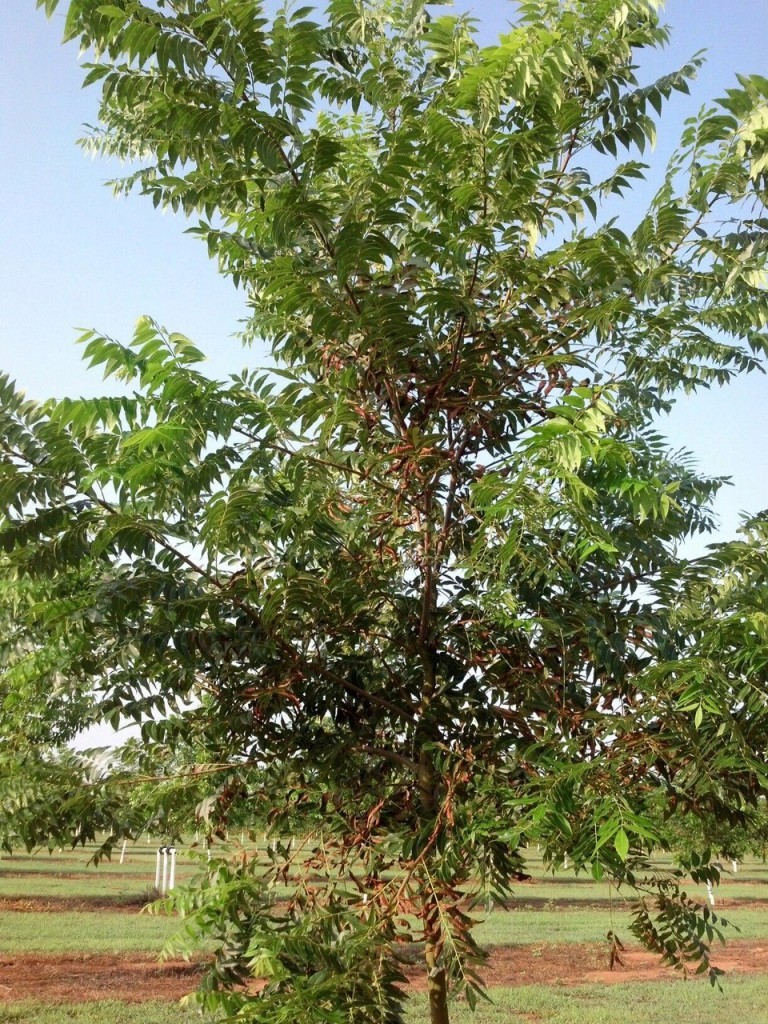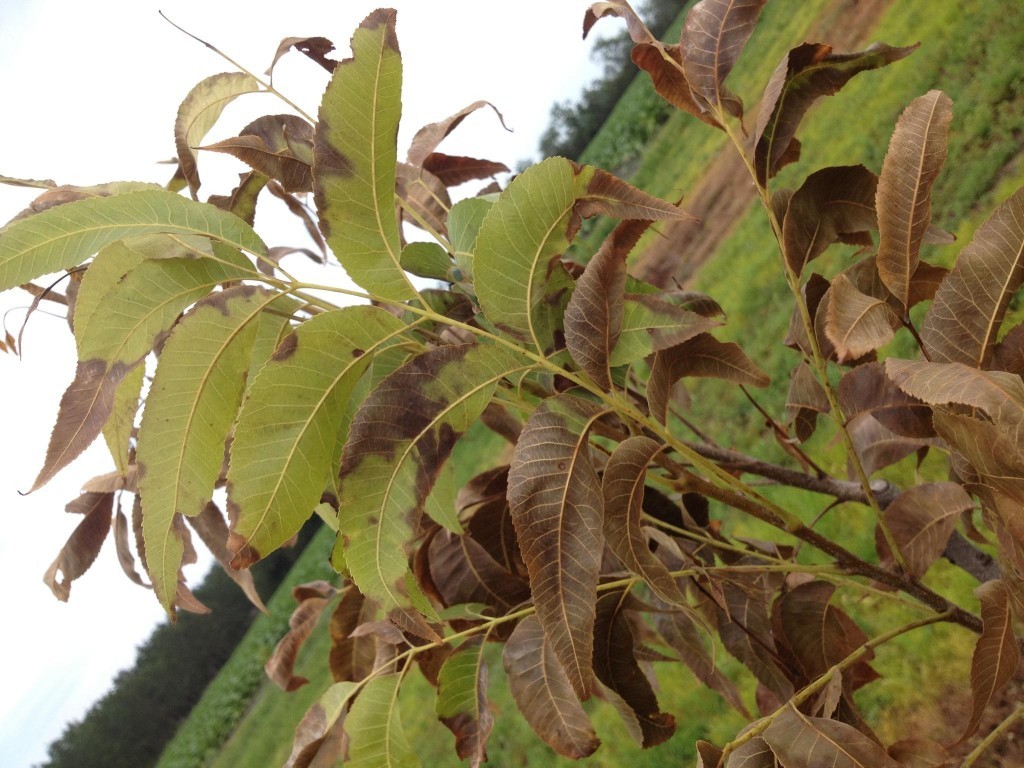Temperatures across Georgia have increased dramatically this week following a cool spring. The thermometer has climbed above 90 every day this week and the forecast is for 96 degrees today. Each year when this happens, we begin to get leaves scorching on young trees and see some die-back here and there. Those calls have already started coming in. If you search leaf scorch on this blog you will see posts from years past describing this.

Lateral roots and fibrous roots are very sensitive to heat and soil moisture. When you see air temperatures around 100 degrees, many shallow roots begin to die. Soil temperatures are generally about 5 degrees warmer than air temperatures down to at least 5″. This is why we so often see scorching on the leaves of young trees when temperatures get up into the 90s as we’ve seen recently.
Ultimately, it’s a result of too much tree for too little root system. First year trees are under a lot of stress from transplant shock. They lose a large percentage of the root system from digging and root pruning and are placed in a new soil environment. As a result the trees are naturally under a little stress. Those that are planted after the end of February will be in even more stress because they don’t get a chance to start getting some root establishment before budbreak. Also, nursery trees that are 8′ or bigger, especially with large trunk caliper, are subject to even more stress when the top is not pruned hard enough at planting because there is more tree there for the roots to support.

This issue remains very common in 2nd and 3rd year trees, which still may not have a root system developed to the extent needed to support vigorous tree growth. I have seen this in trees up to the 4th and 5th leaf.
Its natural for the trees to lose a few feeder roots, which will regrow when conditions are more favorable. Commercially managed trees get dependent on these fragile feeder roots, especially in young, vigorously growing trees. The loss of feeder roots is a bit of a shock and when they are suddenly no longer there to pick up water for the tree when they need it most, you get scorching.
As trees get older and the root system can adequately support the tree, this problem tends to disappear. Older trees can afford to lose a few feeder roots and the shade of the tree canopy offers the feeder roots protection from high temperatures.
Cold Damage Can Make The Problem Worse
Back in mid-March, we had sub-freezing temperatures throughout Georgia, which likely damaged some young trees. This type of damage often does not show up until we see high temperatures because the vascular system, though damaged, can keep up until high temperatures increase the water demand. Once that happens, trees can suffer die back or, if the damage is extensive enough, crash and die. Such trees are especially attractive to ambrosia beetles, of which we have seen more this year than in the last couple years. I think the increase in ambrosia beetle attacks this year is directly related to this injury from the March freeze. Again, cold damage may not be noticeable to the naked eye until foliage begins to scorch/weaken or die back begins or the tree crashes.
How Much Should You Water?
With the arrival of high temperatures, especially amid the dry weather, many growers logically think about increasing their irrigation. But, if you are already irrigating adequately there is no need to get too heavy handed with the irrigation. It seems to make sense that if the tree is having trouble getting enough water you would increase the irrigation, but in this case, its not that you aren’t applying enough water, its that the tree doesn’t have enough root or vascualr system to take it up, so applying extra doesn’t solve the problem.
On loamy sands, young trees (1-3 yrs) should generally get 100 gallons per tree per week. This should be distributed over the week by irrigating every other day. Drip irrigated trees should get 50 gallons per week. It is important to distribute this evenly over time. You want to maintain consistent soil moisture. Even on days in which you are not irrigating, you should still easily find the soil moist to the touch. Watering really heavy a couple days a week and letting it get bone dry in-between encourages problems.
Young trees on deep sand soils need a little more and should probably get water daily (3-4 hrs per day). Heavy clay soils retain more water but get rock hard when dry. Water these soils about twice per week at 4 hrs each time for young trees.
Mature/Bearing trees should follow the guidelines for our normal irrigation schedule below.
A full cycle = 3600-4000 gallons per acre per day
Drip/Micro Schedule For Mature/Bearing Trees
| Month | % Cycle |
| April | 18 |
| May | 27 |
| June | 36 |
| July | 45 |
| August | 100 |
| September | 100 |
| October | 40 |
Solid-Set Irrigation uses more water because you are watering a larger area and must account for more evaporative loss and loss to competing vegetation
Solid-Set Schedule for Mature/Bearing Trees
| Month | % Cycle |
| April | 60 |
| May | 70 |
| June | 80 |
| July | 90 |
| August | 100 |
| September | 100 |
| October | 90 |
For all situations (young and old trees) when you get 1″ rain from April-mid-August, turn the irrigation off for 3 days and then resume the schedule again. From mid-August-September, turn irrigation off on mature/bearing trees if you get 2″ rain and then resume the schedule again. Otherwise, stick to the schedule season-long.
